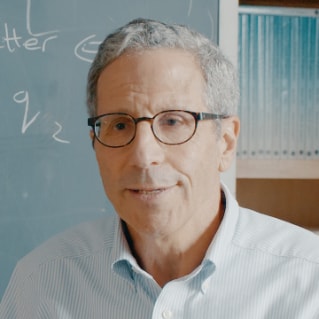How can we design a solution to climate change?
What do plunging global markets have to do with climate change? The need to step in first, by designing mechanisms that prevent such crises, says Nobel economist Eric Maskin.
One example is the financial crisis of 2008, the effects of which the world is still feeling even as it endures the economic crash associated with the spread of the COVID-19 coronavirus.
“One thing that this crisis established quite clearly is that financial markets by themselves don’t always produce the outcomes that we would like,” says Maskin, an American economist and 2007 Nobel Laureate, recognised for having laid the foundations of mechanism design theory along with Leonid Hurwicz and Roger Myerson.
“Particularly when there is a financial meltdown that affects the global economy adversely, this goes to show that somehow we have to modify financial markets.”

Regulation of the financial system as one of the global warming solutions
Regulation of the financial system as one of the global warming solutions
Modifying free market systems - by designing financial regulation that limits leverage, for example – can produce better results. As Maskin explains, this mechanism design theory takes people as they are and tries to reconcile their individual goals with the goals we have as a society.
These principles are particularly relevant regarding global warming, where free markets alone will not provide a solution and there is a need to induce countries to commit to reducing emissions.
“Climate change is not likely to lead to disaster in the next few years, although we are already beginning to see the possible repercussions. But there is a significant risk that if we do nothing, it will lead to catastrophic outcomes down the road, in 50 years’ time, possibly less.
So doing something about climate change is a high priority for the world,” Maskin says.
Reducing carbon emissions working back from the result
The key when designing good mechanisms is to understand the goals, inclinations and behaviors of all these participants – that is, you start with the result you would like and work backwards to figure out how you get there.
Working back from a result of lower greenhouse gas emissions brings us to a mechanism, in the form of an international agreement under which countries commit to reduce their greenhouse gas emissions.
“It’s through such a mechanism that we’ll ultimately solve the global warming problem. So, the potential implications of mechanism design are really quite broad and important,” Maskin says. “In fact, we saw what the free market produces. It produces occasionally a meltdown. We have to modify free market systems, using our mechanism design tools, by for example designing financial regulation that makes sense.”
Has this question inspired you?
Has this question inspired you?
Get the latest Nobel Perspectives updates delivered to you.
Has this question inspired you?
Has this question inspired you?
Get the latest Nobel Perspectives updates delivered to you.



